This is undoubtedly the most frequently encountered Serapias in the eastern Mediterranean and it's perhaps surprising therefore that the plant has only been known as a distinct taxon for just over a century, having first been described from Corfu in 1908 and named after the French botanist Monsieur P. Bergon.
Much of its recorded existence has been spent as a subspecies to either S. cordigera or latterly S. vomeracea and in both cases as subsp laxiflora. There are a number of authorities who remain sceptical about bergonii's full species status and it's certainly true that in some populations, differentiating this plant from other Serapias species can be all but impossible. This is due to natural variation and significantly to hybridization, which over the years has contributed to the creation of huge intermediate swarms. An interesting characteristic of S. bergonii is that together with S. orientalis, it seems far more prone to hypochromy than its cousins, it also shows a predisposition towards low anthocyanin production, a condition which leads to very pale, often yellowish colouration.
S. bergonii is generally shorter and less robust than S. vomeracea but the key feature distinguishing the two, is the length of the bracts relative to the hood. In S. bergonii the height of the bract is no more (and usually considerably less) than twice that of the hood whereas in S. vomeracea, the relationship can be closer to three times, creating a distinctive appearance reminiscent of church spires rising from a town skyline. As can be seen from the photos however, bract length is not a reliable differentiator and neither is epichile colour, width or length. The final three pictures depict a very unusual plant from the slopes of Mount Hymettus outside Athens.
The species is distributed throughout the eastern Mediterranean as far as Anatolia and reaches Calabria and Sicily in the west. The illustrations here are from Gargano and various sites in Greece and the Aegean dating from early to late April.

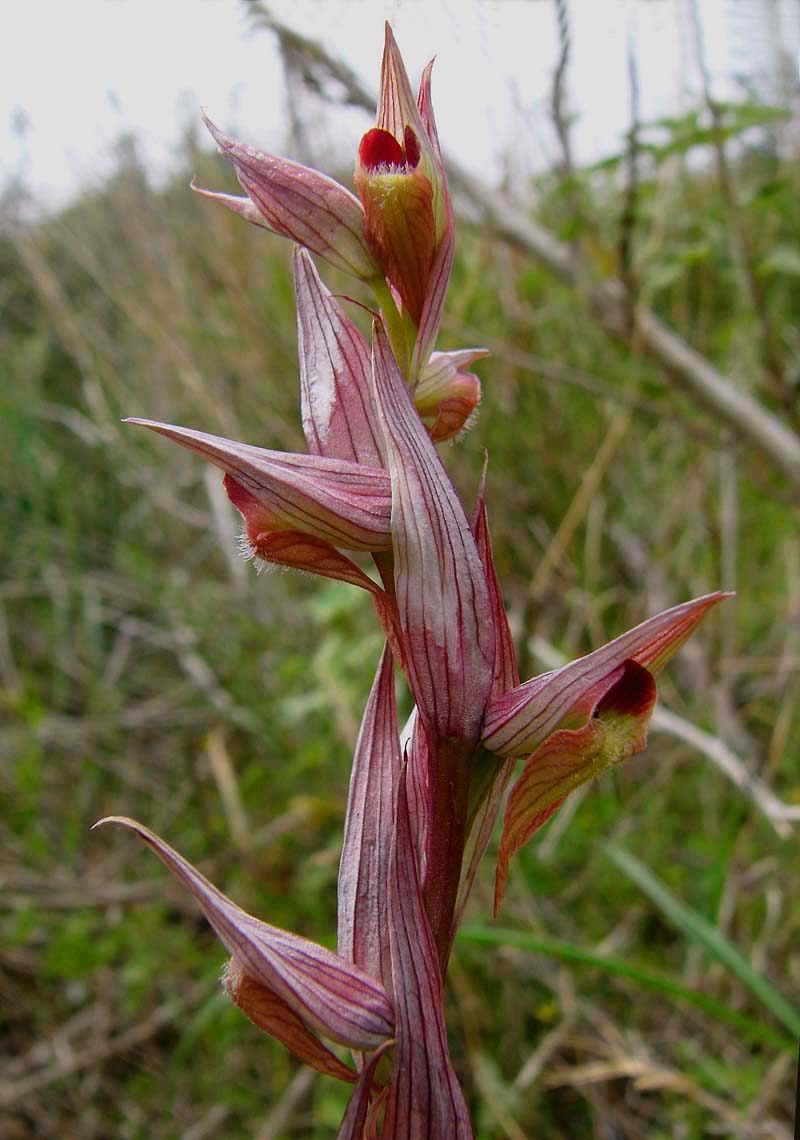

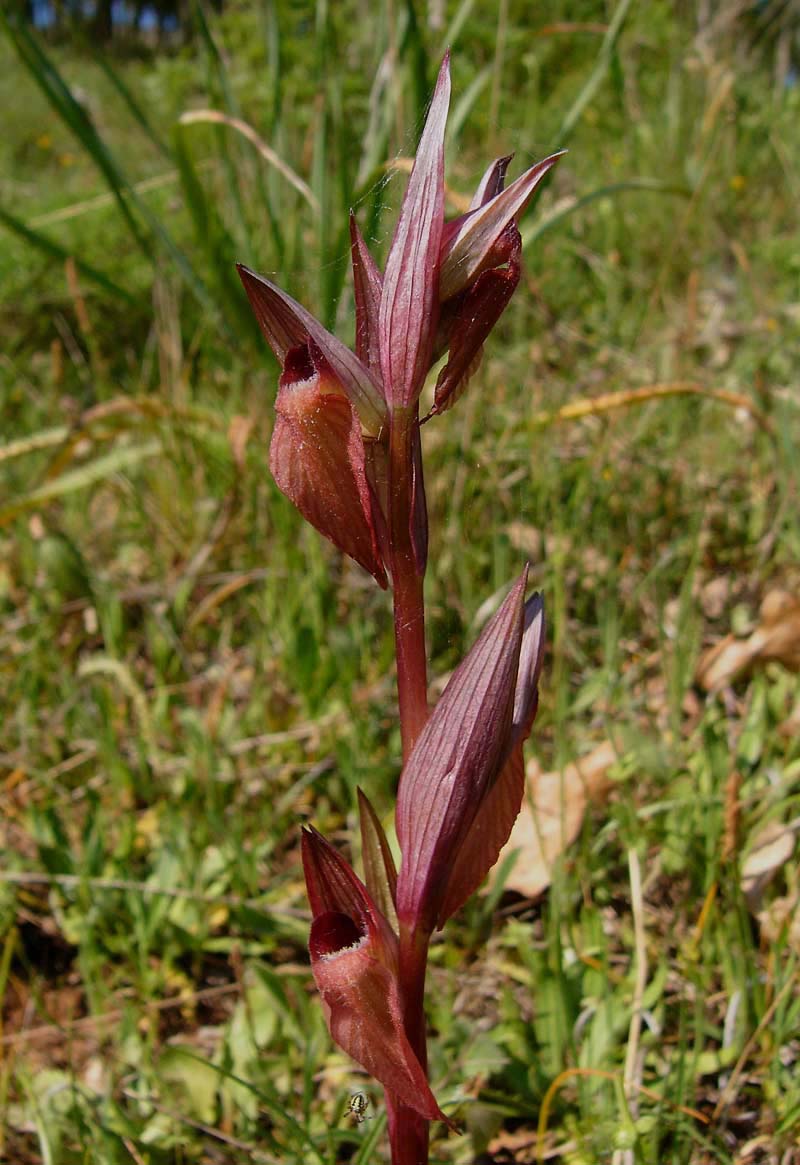
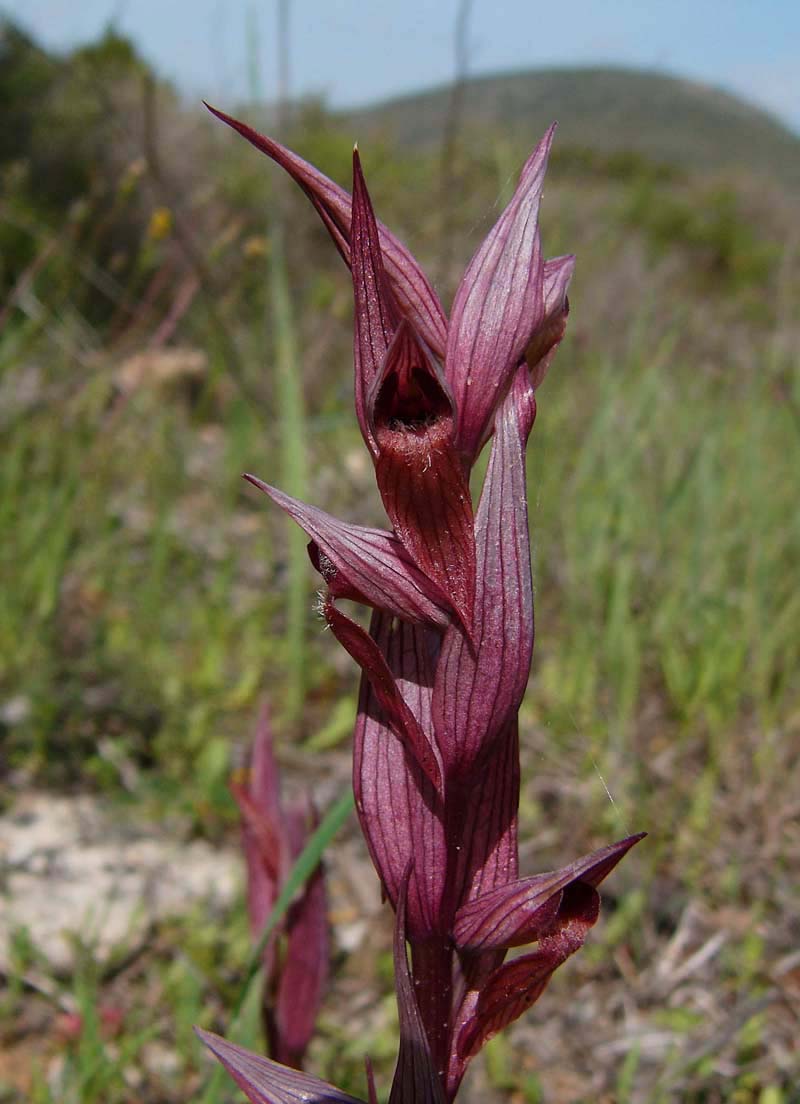
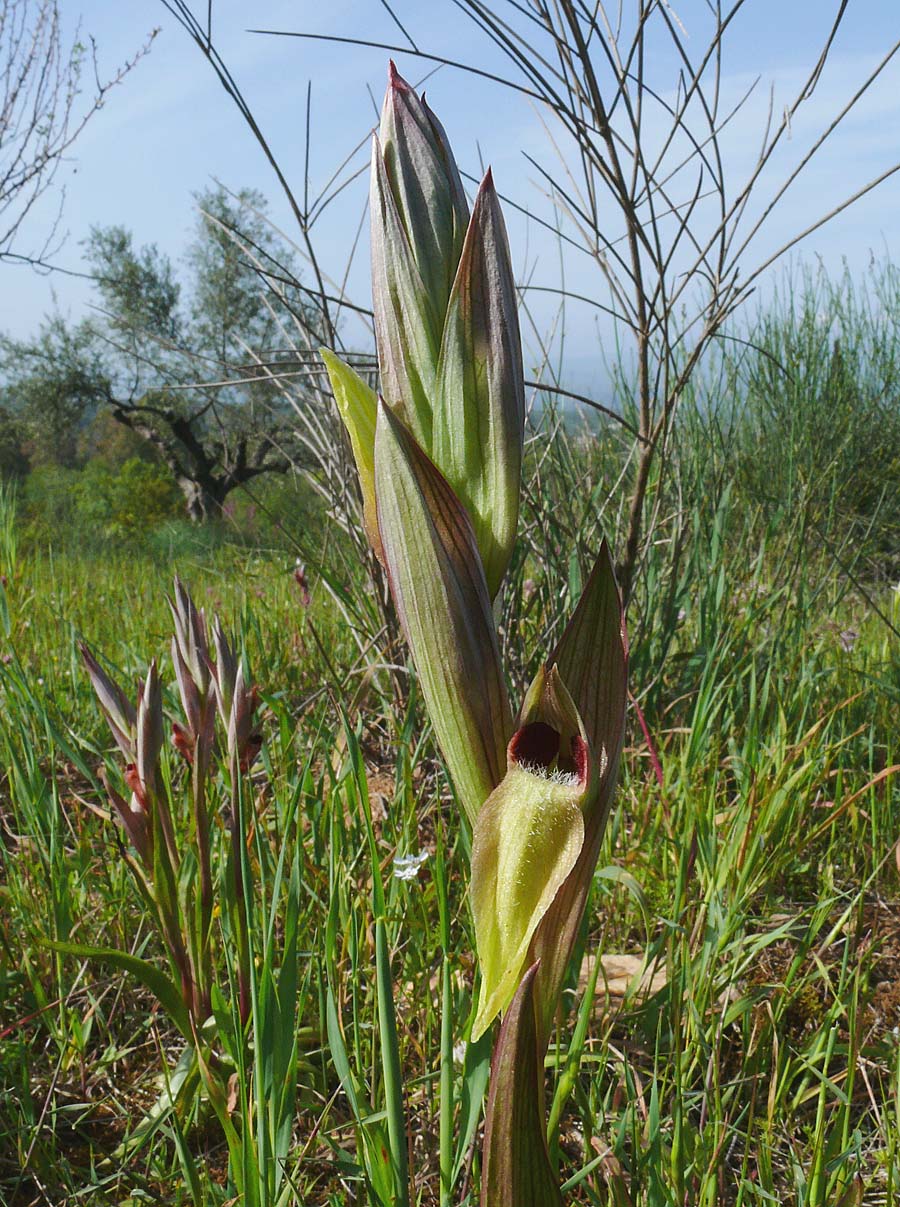
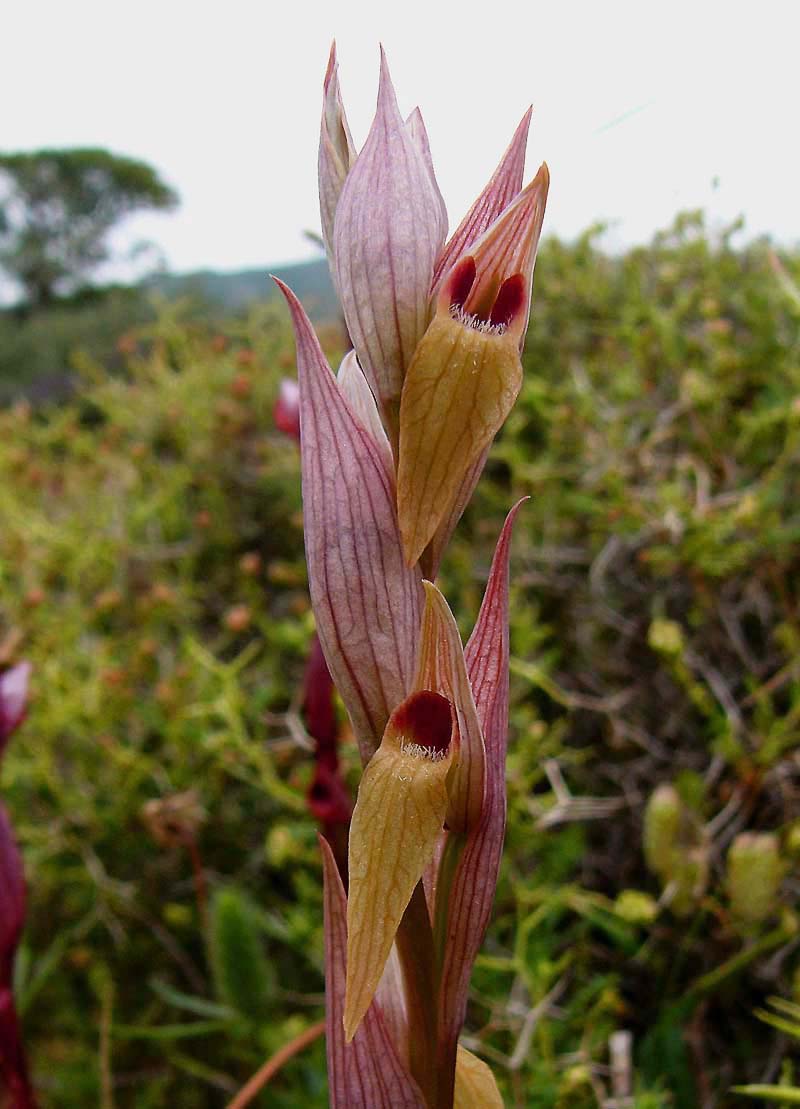
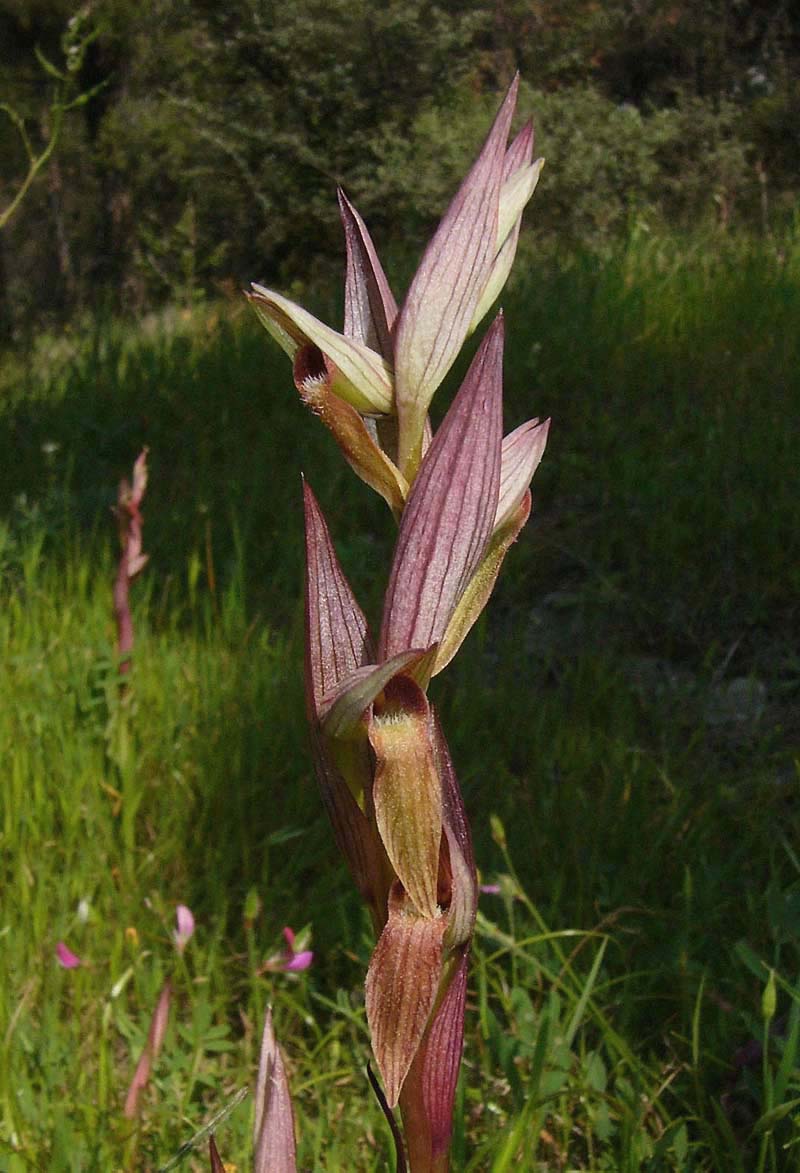
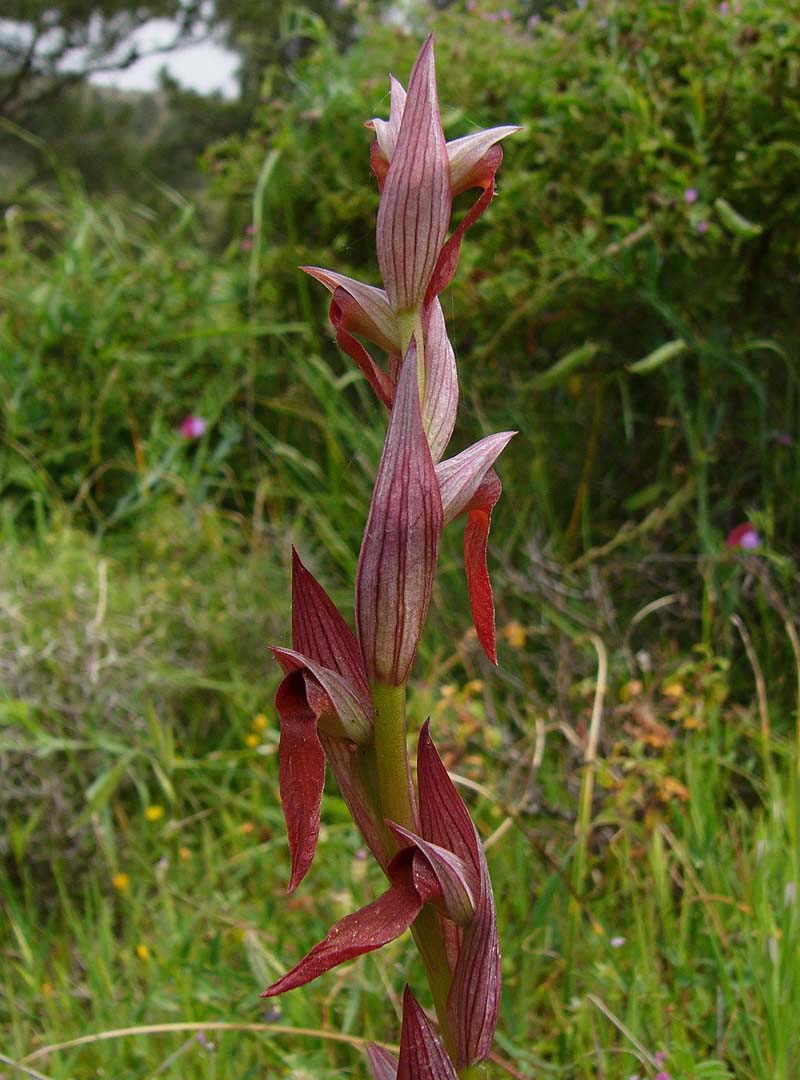
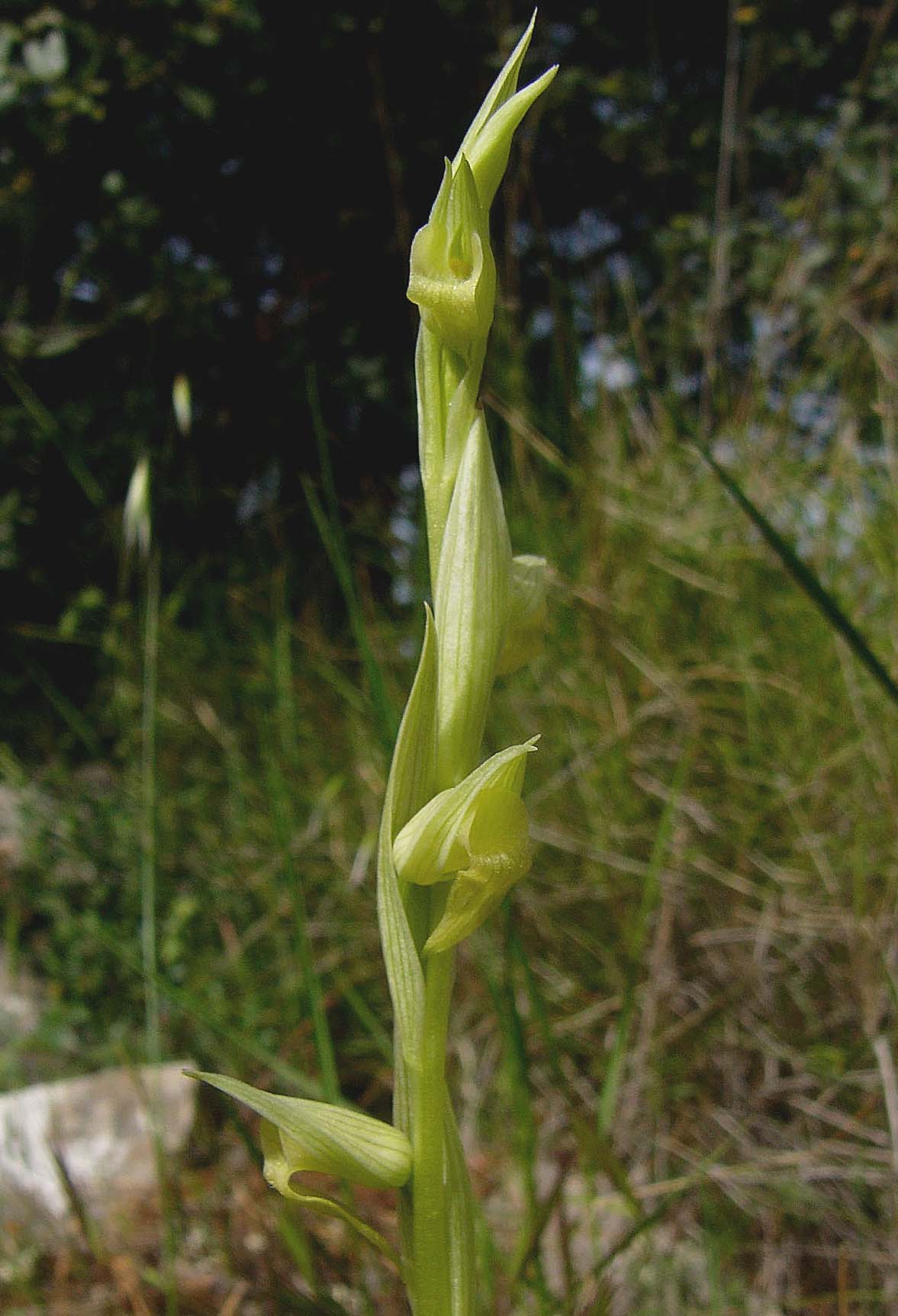
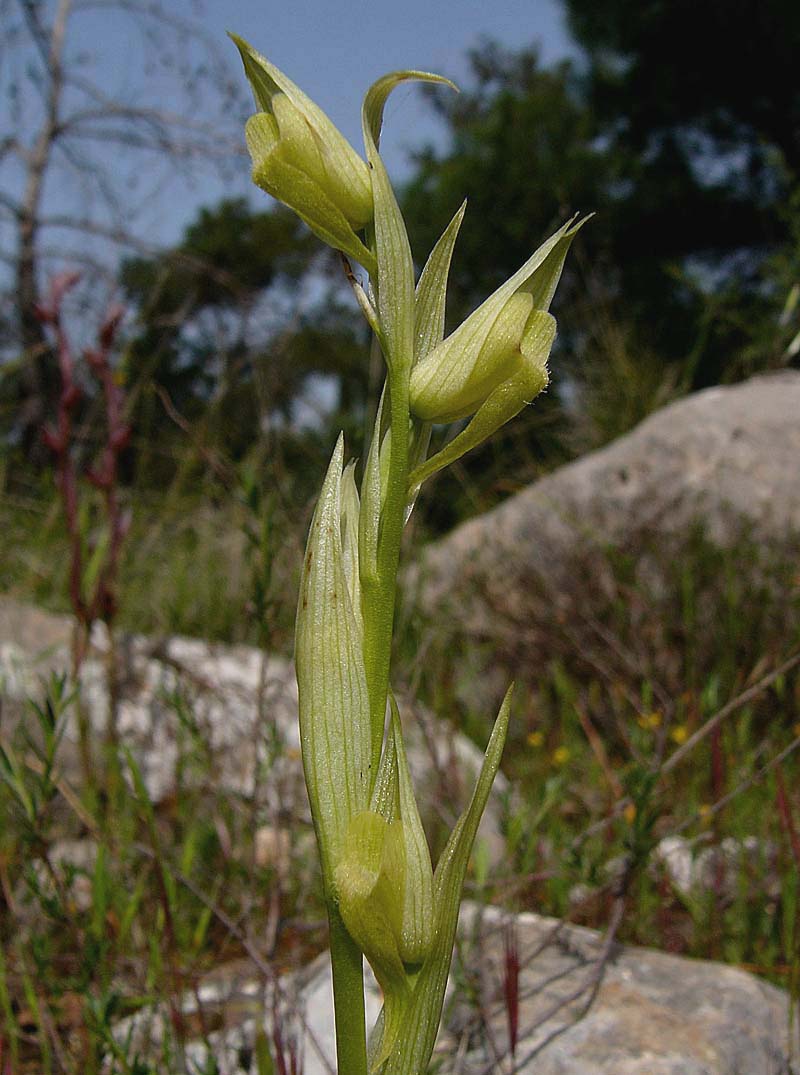
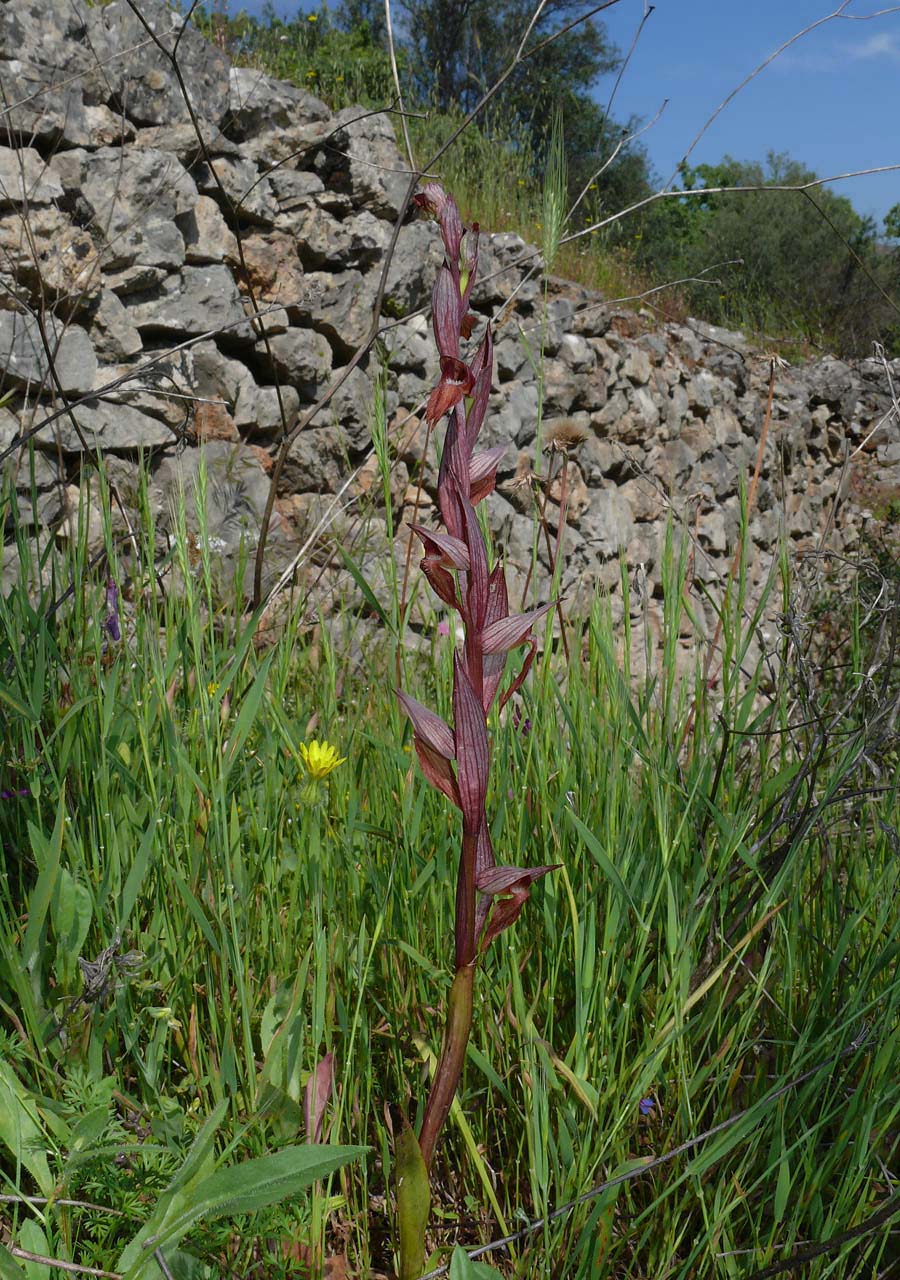
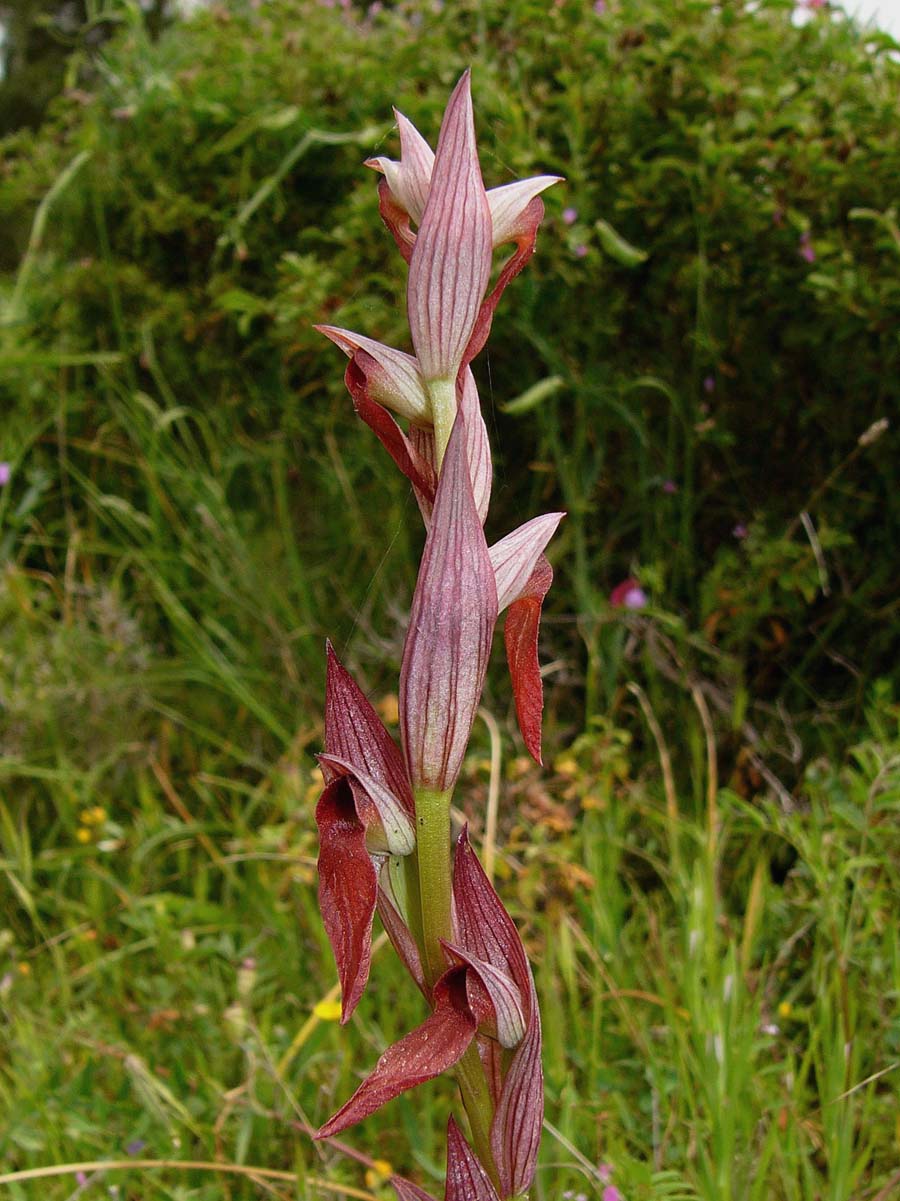
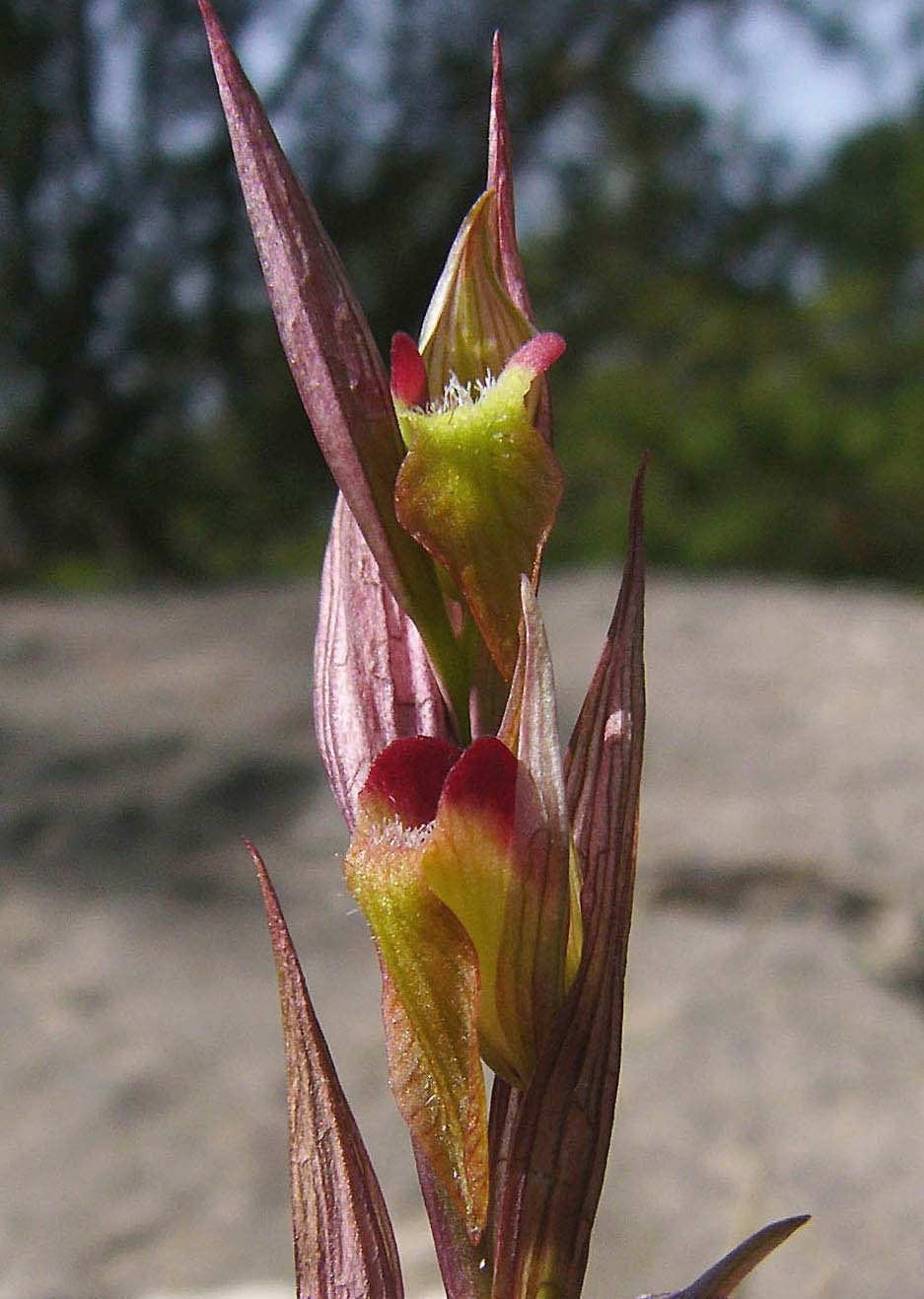
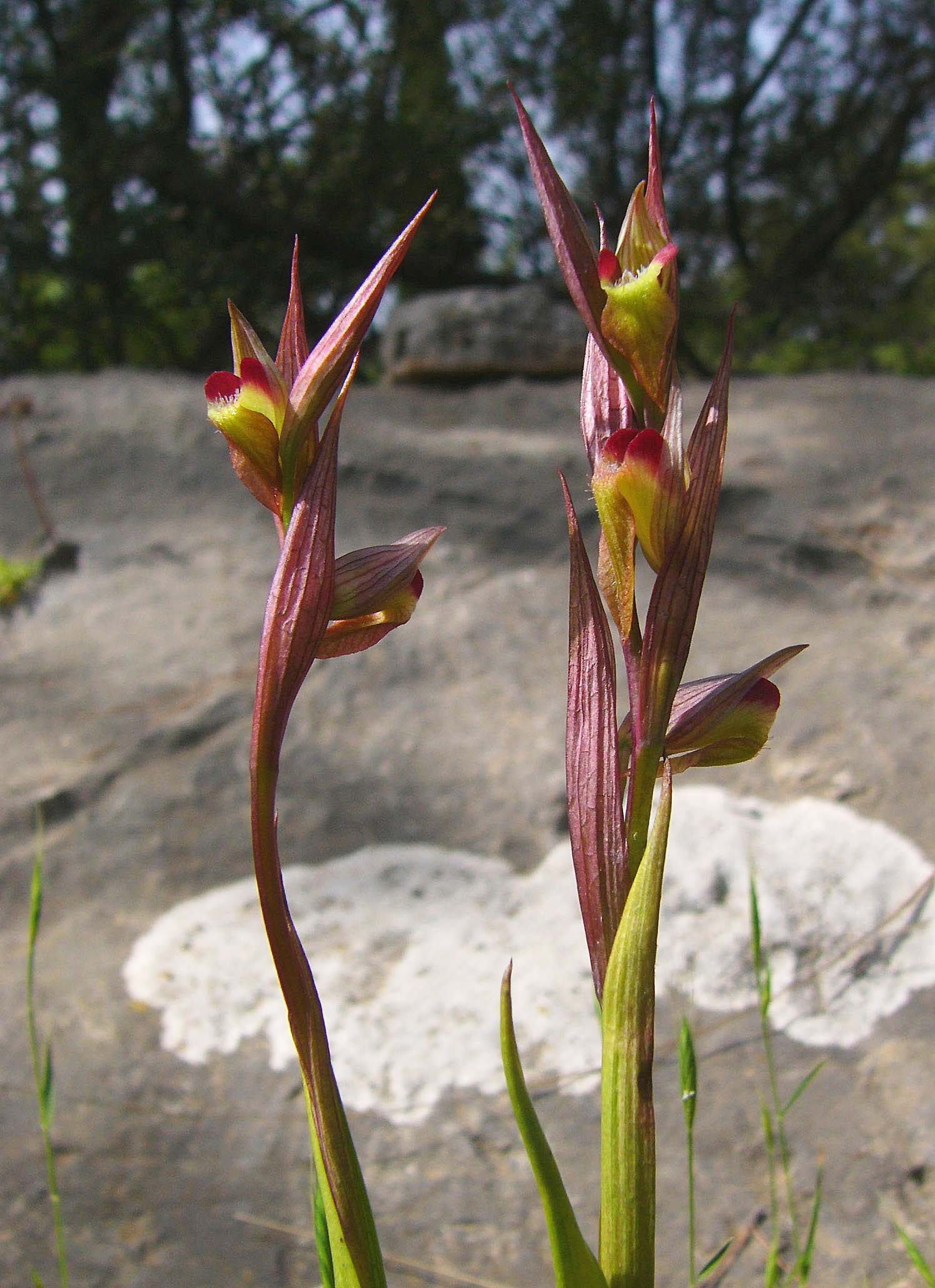
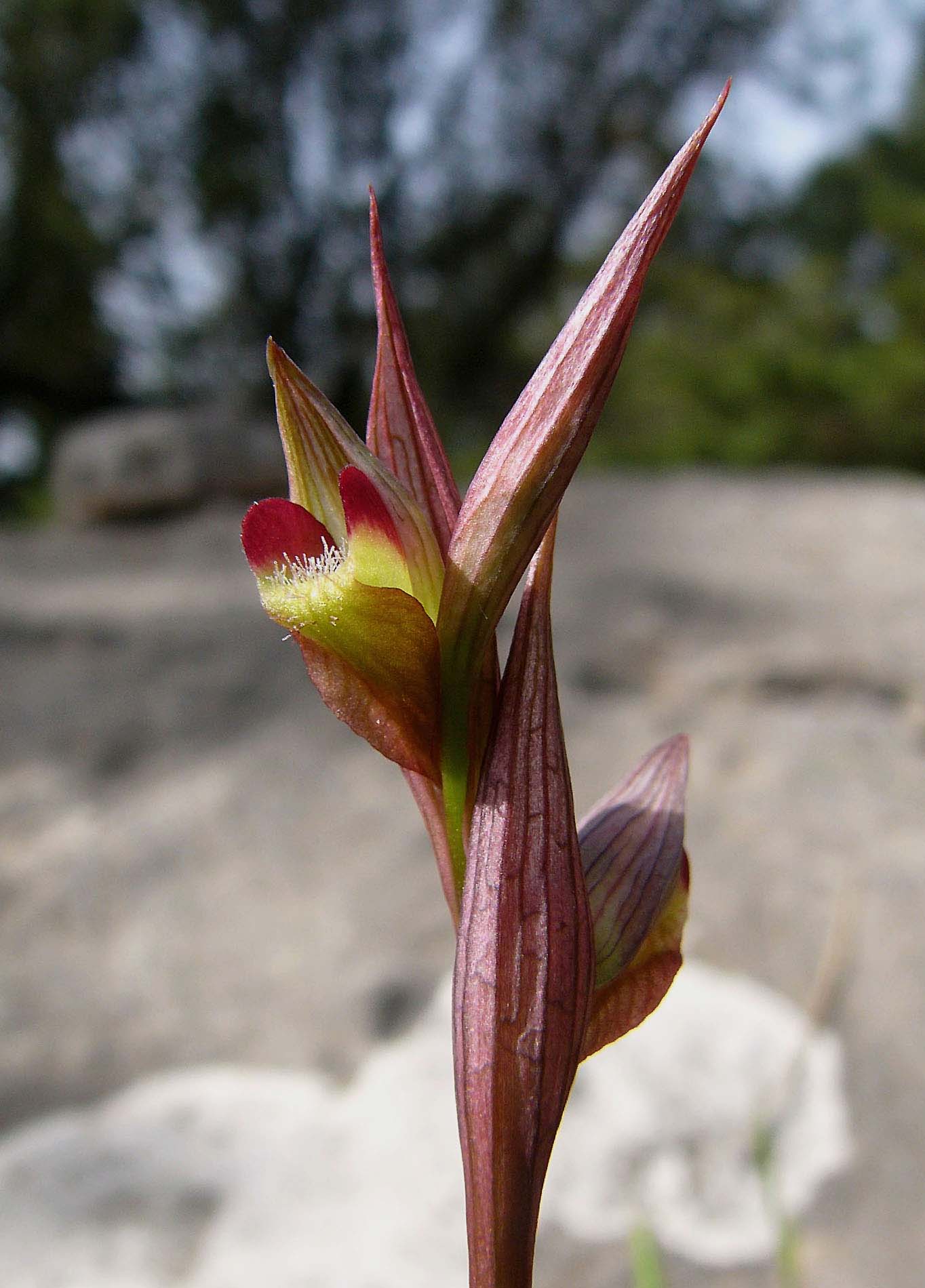
.